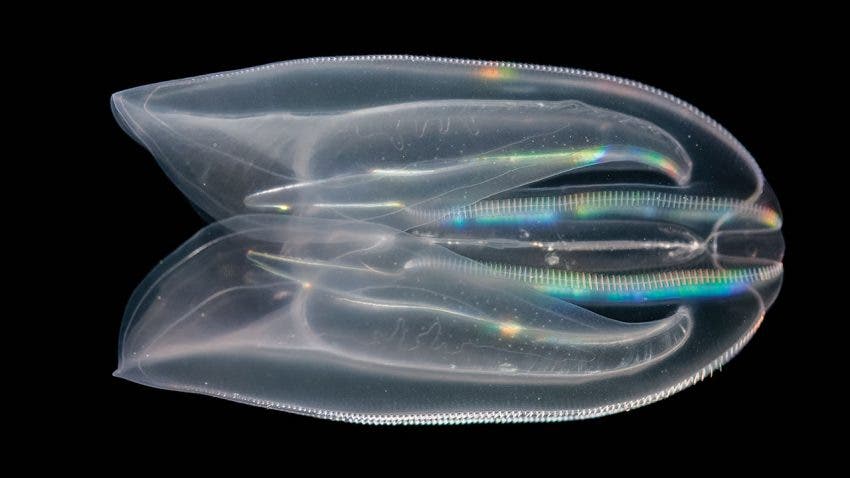We don’t think about it that much, but the butthole is one of the biggest innovations in 500 million years of evolution. Before that, animals literally had potty mouths – and their descendants still do. Sea sponges, sea anemones, and jellyfish, all lack an anus and must eat and excrete through the same hole. Now, researchers wanted to see just how these creature excrete their food, and the results were pretty surprising.

William Browne of the University of Miami in Florida used a sophisticated video setup to continuously monitor two species of comb jellies that he keeps in captivity, Mnemiopsis leidyi and Pleurobrachia bachei. Previously, he engineered tiny crustaceans and zebrafish — the preferred food of the comb jellies — to glow red with a fluorescent protein. Because the jellies are transparent, he could then see the glowing crustaceans as they circulated through the jellies’ bodies.
What they found was quite surprising: going against everything that biologists thought, comb jellies didn’t eject the leftovers through their mouth, but through some pores on their rear end, on the other side of the body.
“Looks like I’ve been wrong for 30 years,” said George Matsumoto, a marine bio logist at Monterey Bay Aquarium Research Institute in Moss Landing, California, after he saw Browne’s talk. “If people don’t see this video, they won’t believe it,” he added.
Previously, biologists had observed jellies ejecting food through their mouth, but that was likely just because they were overfed or they didn’t like something.
“We have all these traditional notions of a ladderlike view of evolution, and it keeps getting shaken,” added Kevin Kocot, an evolutionary biologist at the University of Alabama, Tuscaloosa.
This finding carries important information not only for present animals, but also for ancient ones. When did comb jellies develop these anus-like pores? Was it some ancestor that did it millions or hundreds of millions of years ago and lost by some species? Was it developed in recent history? Those are the questions researchers will now try to explore.
Browne is currently exploring the latter theory. If he finds the a genetic difference that could account for this change, the evolution of our most unspeakable body part will no longer be considered the singular event zoologists long supposed.


